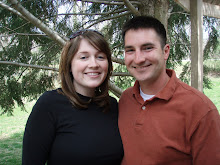 For the final pathology blog of the semester I decided to find out some more information on a herniated nucleus pulposus. This disorder, where the soft spongy center of our intervertebral discs pushes out into our spinal canal, is often very painful. This disorder also goes by many other names such as lumbar radiculopathy, herniated intervertebral disc, slipped disc or ruptured disc. While a herniated nucleus pulposus can occur anywhere in the spine, it is more likely to occur in our lumbar spine region, 15 times more likely!
For the final pathology blog of the semester I decided to find out some more information on a herniated nucleus pulposus. This disorder, where the soft spongy center of our intervertebral discs pushes out into our spinal canal, is often very painful. This disorder also goes by many other names such as lumbar radiculopathy, herniated intervertebral disc, slipped disc or ruptured disc. While a herniated nucleus pulposus can occur anywhere in the spine, it is more likely to occur in our lumbar spine region, 15 times more likely!There can be many causes of a herniated nucleus pulposus. Any type of trauma to the body such as a car wreck or fall or even from putting too much strain on our lumbar spine area such as incorrectly lifting something too heavy or twisting our spine the wrong way.
A herniated nucleus pulposus can lead to compression of our spinal nerves often causing lower back, leg, and pelvic pain, or even numbness in the legs just to name a few. The demographic most likely to suffer from a herniated nucleus pulposus are middle aged men who engage in a lot of heavy physical activity.
Initially, treatment for a herniated nucleus pulposus includes rest and pain medication followed by physical therapy. If this does not relieve the patient's symptoms, sugery to remove to bulging disc would be required.
I found my information for this blog on http://www.umm.edu/ and my picture
